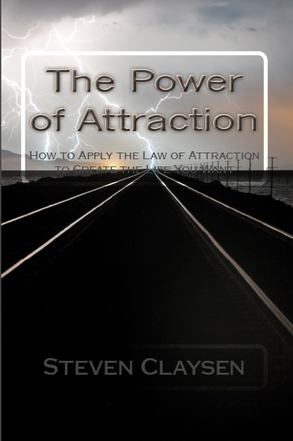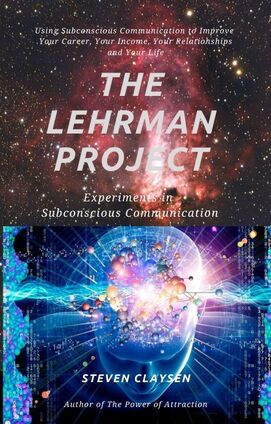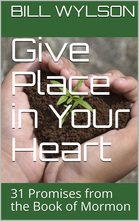NEW RELEASES
Hieroglyphs, Golden Plates & Typos
How 'Corrections' in the Book of Mormon Prove Its Authenticity
"A very interesting and faith-building book."
|
"Don't be fooled by any part of the title, the mistakes help to prove that the Book of Mormon is the word of God."
Just finished reading Hieroglyphs, Golden Plates, and Typos: How Corrections in the Book of Mormon Prove Its Authenticity and really enjoyed this brief volume. Although I was aware of some of what the author discusses about reformed Egyptian and working with metal plates, I was happy to see it all down in print. Don't be fooled by any part of the title, the mistakes help to prove that the Book of Mormon is the word of God.
Mark F. I really enjoyed learning about the history of the Book of Mormon. So often we talk about what is written and seldom think about the way the plates were made. Hieroglyphs, Golden Plates, and Typos is a refreshing perspective that now helps me see and think new things as I read the scriptures.
Mike Hanson |
On the inside cover of his first leather-bound Book of Mormon, my father inscribed a powerful quotation by the prophet Joseph Smith.
“I told the brethren that the Book of Mormon was the most correct of any book on earth, and the keystone of our religion, and a man would get nearer to God by abiding by its precepts, than by any other book.” Directly below this quote, my father had compiled a list of scriptures labeled “Mistakes in the Book of Mormon.” Moroni candidly and apologetically acknowledged: “And if there be faults they be the faults of a man. But behold, we know no fault.” How, then, did my father have the boldness to make his list of ‘mistakes’ in the Book of Mormon? The corrections in the Book of Mormon serve as evidence of its authenticity and truthfulness and they provide insights into the process of creating and inscribing ancient plates. “I have been a Latter-day Saint. for almost 43 years now, and I have lost count of the number of times I have read the Book of Mormon. Hieroglyphs, Golden Plates, and Typos gives me new insight. From now on, I can read the Book of Mormon with more understanding.”
Kindle Customer "Hieroglyphs, Golden Plates, and Typos presents excellent evidence of the claims that the Book of Mormon is an ancient writing inscribed on metal plates which was later translated by the prophet Joseph Smith. Wylson convincingly demonstrates how the original authors of the Book of Mormon corrected any typos or slips of the stylus, as he calls them, and presents them as evidence of the origin of the Book of Mormon. A very interesting and faith-building book."
Will F. Hieroglyphs, Golden Plates, and Typos was a great, brief read that brought out some interesting points about the reality of inscribing sacred records onto metal plates. Worth spending a couple of hours pondering.
Michael D. Britton |
The Whiteboard EffectErase Your Past and Re-write a Brilliant Future
The Whiteboard Effect offers insights into how we can cultivate more self-awareness and apply mindful acceptance practices to develop a healthier relationship with ourselves; and how we can leverage relationships with family, friends, and team members as a source of strength rather than weakness. It provides the means for unlocking the capacity for personal development using simple yet effective strategies.
These insights are independent of any outer circumstance or personal characteristics; they do not adhere to specific religious or philosophical teaching. The Whiteboard Effect stands out for its simplicity, effectiveness, and rapidly evident results. The ease of this approach practically disguises the benefit of the procedure. Simply stated, it frees us from the emotional attachments that primarily cause our suffering and hold us back. |
Green Stem Media
|
The Latest from Steven Claysen
The Power of AttractionYou may not realize it but you are already using the power of attraction to create the life you are living. If any aspect of your life isn't what you hoped it would be, then this book can jhelp you.
|
The Lehrman ProjectThis book will show you how to harness the power of subconscious communication to help you attain the positive things you are looking for in your relationships, finances, and life circumstances.
|
29 Principles & Powers of Attraction29 Principles and Powers of Attraction is a type of Operator’s Manual for directing the subconscious in the manoeuvring and management of the Law of Attraction. This book explains the required functions, the essential operations and the necessary skills involved in effectively producing positive results from the Law of Attraction.
|
Also from Bill Wylson and Green Stem Media:
Latter-day Grooks
|
|
Latter-day Grooks: Volumes One & Two
|
|
|
What Are Grooks?Grooks were originally created by the Danish poet Piet Hein, (1905–1996) who wrote over 7000 of them in both the Danish and English languages. A grook (‘gruk’ in Danish) is a form of short aphoristic poem or rhyming aphorism. An aphorism is a concise, terse, laconic, or memorable expression of a general truth or principle.
Some say that the name "gruk" is short for "grin & suk" (literally, 'laugh & sigh'), but Piet Hein said he felt that the word had come out of thin air. |
Who Is Piet Hein?Piet Hein was confronted with a dilemma when the Germans first occupied Denmark. He felt he had three choices; do nothing, flee to neutral Sweden, or join the Danish resistance movement. So, he joined the Resistance.
Hein’s greatest weapon was his pen. His grooks were meant to be a spirit-building, coded form of passive resistance. The grooks are multi-faceted and characterized by irony, paradox, brevity, precise use of language, rhythm, and rhyme. They were often satiric in nature. |
What Are Latter-day Grooks?Award-winning poet, Bill Wylson, believes “the Latter-day Saints are in a resistance movement of our own. We are fighting the forces of evil and resisting the temptations of Satan. It would be tragic if we lost our faith in a moment of crisis and threw away the blessings of eternity.” In this volume, the author has attempted to cite the words and teachings of President Russell M. Nelson, prophet and president of the Church of Jesus Christ of Latter-day Saints and to express his ideas in the form of latter-day grooks.
|
Latter-day Grooks - Vol. 3
From the Words and Wisdom of Dieter F. UchtdorfGrooks were initially created by the Danish poet Piet Hein (1905–1996), who wrote over 7000 of them in both the Danish and English languages. A grook (‘gruk’ in Danish) is a short aphoristic poem or rhyming aphorism. Literary experts suggest that the term ‘gruk’ is a compilation of the Danish words’ GRin and sUK,’ meaning to laugh and sigh, but Piet Hein said he felt that the term came to him out of thin air.
Aphoristic collections, known as wisdom literature, are prominent in Western civilization. They have had a profound impact on the canons of ancient societies, such as the works of the sutra literature of Hinduism and Buddhism, the Biblical Ecclesiastes, Islamic hadiths, the golden verses of Pythagoras, Hesiod’s Works and Days, the Delphic maxims, and Epictetus’ Handbook. Hein's grooks were meant to be a spirit-building, coded form of passive resistance. The grooks are multi-faceted and characterized by irony, paradox, brevity, precise use of language, rhythm, and rhyme. They were often satiric. In this volume of Latter-day Grooks, the author Bill Wylson has attempted to cite the words and teachings of Elder Dieter F. Uchtdorf, an apostle of the Church of Jesus Christ of Latter-day Saints, and to express his ideas in the form of latter-day grooks. |
The Latest from Rich Nelson:
El Shaddai
|
"When we search and study the names that God reveals to us in the Bible, we will better understand who He really is."
|
|
To hallow a thing is to make it holy, to set it apart to be exalted and worthy of absolute devotion. To hallow the name of God is to regard Him with complete devotion and loving admiration. We should preserve His name in a position of solemn significance in our hearts and minds. We should rejoice in it and think deeply about its true meaning.
“May your glorious name be blessed; may it be lifted up above all blessing and praise.” |
Bill WylsonThe Greatest Thing in the World |
Rich NelsonSustainable Spirituality |
Steven ClaysenThe Lehrman Project |
A New Series!from Stephen R. GortonAncient civilizations used plants and plant extracts to improve their health and lifestyle. Modern medicine has substituted natural healing with synthetic imitations but essentil oils are once again emerging out of the fringes as a healthier alternative.
|
|
More from Bill Wylson
The Manger
|
Give Place
|
A New Earth
The real question concerning climate change is: What can we do about it? A myriad of solutions exist, from the bizarre to the ridiculous. Suggestions like creating a giant umbrella to block the sun’s rays; creating plastic trees to absorb carbon dioxide; eating insects instead of meat; bio-engineering humans to be smaller; and NASA's suggestion to move the earth away from the sun. Through all of this we are missing the one solution that could actually make a difference.
|
The Powerful Christian Series by S. Richard Nelson
Turning Faith
|
Gaining Power
|
The Added Power
|






























